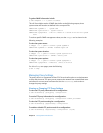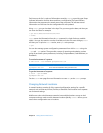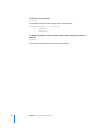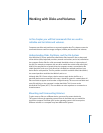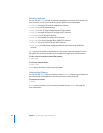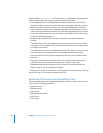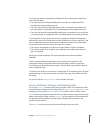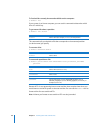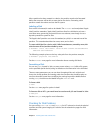
84 Chapter 7 Working with Disks and Volumes
Mounting Volumes
You can use the mount tool with parameters appropriate to the type of file system you
want to mount, or use one of these file-system–specific mount commands:
 mount_afp for Apple File Protocol (AppleShare) volumes
 mount_cd9660 for ISO 9660 volumes
 mount_cddafs for CD Digital Audio format (CDDA) volumes
 mount_hfs for Apple Hierarchical File System (HFS) volumes
 mount_msdos for PC MS-DOS volumes
 mount_nfs for Network File System (NFS) volumes
 mount_smbfs for Server Message Block (SMB/CIFS) volumes
 mount_udf for Universal Disk Format (UDF) volumes
 mount_webdav for Web-based Distributed Authoring and Versioning (WebDAV)
volumes
mount prepares and grafts a special device or the remote node (rhost:path) on to the
file system tree at the point node. See the related man pages for more information.
To view a list of currently mounted file systems:
$ sudo mount
To mount a network folder:
$ mount /dev/
mount
returns the value 0 if the mount succeeded.
Unmounting Volumes
You can use the umount tool to unmount a volume. umount removes a special device or
the remote node (rhost:path) from the file system tree at the point node.
To unmount a volume:
$ umount
umount
returns the value 0 if the umount succeeded. See the umount man page for
more information.



